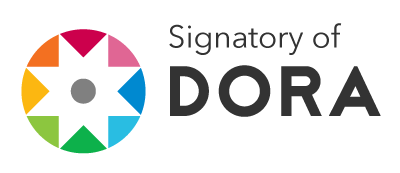El Papel de las PGE en el Rendimiento Financiero de Microempresas Emprendedoras para el Desarrollo Socioeconómico Regional
DOI:
https://doi.org/10.37467/gka-revsocial.v8.2028Palabras clave:
Emprendimiento, Rendimiento financiero, Microempresas, Desarrollo social y económico, Personal economyResumen
Propósito. Conocer el grado de influencia que ejerce las prácticas de gestión empresarial sobre el rendimiento financiero de las microempresas emprendedoras para el desarrollo socio económico regional. Metodología: El diseño metodológico empleado fue cuantitativo, explicativo, observacional y transversal. Se analizaron 127 jóvenes emprendedores del estado de Guanajuato, México. Se desarrolló un modelo SEM cuyos índices de bondad y ajuste (X2=172.386 gl= 101; CFI = 0.942 y TLI=0.932; RMSEA= .07) son ser aceptables Resultados: Se encontró una relación positiva y significativa entre las prácticas de gestión empresarial y el rendimiento financiero de las microempresas emprendedoras. Asimismo, las prácticas de gestión empresarial influyen positiva y significativamente sobre el rendimiento financiero de las microempresas emprendedoras en el estado de Guanajuato, México.
Descargas
Estadísticas globales ℹ️
|
474
Visualizaciones
|
177
Descargas
|
|
651
Total
|
|
Citas
Ahire, S., Golhar, D., & Waller, M. (1996). Development and Validation of TQM Implementation Construct. . Decision Sciences., 27(1). Pp. 23-56. Doi: 10.1111/j.1540-5915.1996.tb00842.x. DOI: https://doi.org/10.1111/j.1540-5915.1996.tb00842.x
Antonakis, J., Avolio, B., & Sivasubramaniam, N. (2003). . Context and leadership: An examination of the nine factor full range leadership theory using the Multifactor Leadership Questionnaire. Leadership Quarterly, 14, 261–295. doi:10.1016/S1048-9843(03)00030-. DOI: https://doi.org/10.1016/S1048-9843(03)00030-4
Bass, B., & Avolio, B. (2004). Multifactor Leadership Questionnaire. Third Edition Manual and Sampler Set. MindGarden, Inc. .
Bollen, K. (1987). Total, direct and indirect effects in structural equation models. . Sociological Methodology. , 17. pp. 37-69. Doi: 10.2307/271028. DOI: https://doi.org/10.2307/271028
Bollen, K. (1989). Structural equations with latent variables. New York, NYS : John Wiley & Sons. DOI: https://doi.org/10.1002/9781118619179
Bonett, D., & Wright, T. (2000). Simple size requirements for estimating Pearson, Kendall and Sperman correlations. . Psichometrika, 65(1). pp. 23-28. Doi: 10.1007/BF02294183. DOI: https://doi.org/10.1007/BF02294183
Carter, N., Gartner, W., & Reynolds, P. (1996). Exploring start-up event sequences. Journal of Business Venturing,, 11, pp.151–166. Doi: 10.1016/0883-9026(95)00129-8. DOI: https://doi.org/10.1016/0883-9026(95)00129-8
Chang, D., & Sun, K. (2007). Exploring the correspondence between total quality management and Peter Senge’s disciplines of a learning organization: a Taiwan perspective. Total Quality Management and Business Excellence, 18 (7), pp. 807–822. Doi: 10.1080/1478. DOI: https://doi.org/10.1080/14783360701349914
Cronbach, L. (1951). Coefficient alpha and internal structure of test. Psycho-metrica, 16. pp. 297 - 335. Doi: 10.1007/BF02310555. DOI: https://doi.org/10.1007/BF02310555
Crosby, P. (1989). Let's Talk Quality: 96 Questions You Always Wanted to Ask Phil Crosby. New York:, USA: Mc Graw-Hill.
Davila, T. (2000). An empirical study on the drivers of management control systems' design in new product development. Accounting. Organizations and Society, 25(4-5), pp. 383-409.Doi: 10.1016/S0361-3682(99)00034-3. DOI: https://doi.org/10.1016/S0361-3682(99)00034-3
De la Garza, M., Zavala, M., & López-Lemus, J. (2016). Competencias del emprendedor y su impacto en el desempeño organizacional. En R. Ojeda, & L. López, Gestión Social Organizaciones Humanas Para Una Sociedad Incluyente. (págs. PP. 7933 - 7956.). Mérida, Yucatán. México.
De Noble, A., Jung, D., & Ehrlich, S. (1999). Entrepreneurial self-efficacy: The development of a measure and its relationship to entrepreneurial actions., . Frontiers of Entrepreneurship Research, Waltham.
Deming, W. (1986). Out of the Crisis. Cambridge, MA.: MIT Press: .
Ebner, A. (2005). Ebner, A. (2005). Entrepreneurship and economic development From classical political economy to economic sociology. . Journal of Economic Studies, 32(3). Pp.256-274. Doi: DOI 10.1108/01443580510611047. DOI: https://doi.org/10.1108/01443580510611047
EFQM. (3 de Octubre de 2016). European Foundation Quality Model . Obtenido de http://www.efqm.org
Fallahi, F., Pouraghi, H., & Rodriguez, G. (2012). The unemployment rate, unemployment volatility, and crime. . International Journal of Social Economics. , 39(6). Pp. 440-448. DOI 10.1108/03068291211224937. DOI: https://doi.org/10.1108/03068291211224937
Flynn, B., Schroeder, R., & Sakakibara, S. (1994). A Framework for Quality Management Research and an Associated Measurement Instrument. Journal of Operations Management, , 11(4), pp. 339-366. Doi:10.1016/S0272-6963(97)90004-8. DOI: https://doi.org/10.1016/S0272-6963(97)90004-8
Hair, j., Hult, G., Rngle, C., & Sarstedt, M. (2014). A primer on partial least squares structural equation modeling (PLS SEM). USA: SAGE Piblications. USA.
Hitt, M. (2001). Iniciativa empresarial estratégica. . SMJ, 22.pp479-491.
Ho, D., Duffy, V., & Shih, H. (1999). An Empirical Analysis of Effective TQM Implementation in the Hong Kong Electronics Manufacturing Industry. . Human Factors and Ergonomics in Manufacturing, 9 (1). Pp.1–25. Doi: 10.1002/(SICI)1520-6564(199924)9:1<1::. DOI: https://doi.org/10.1002/(SICI)1520-6564(199924)9:1<1::AID-HFM1>3.0.CO;2-L
Hoque, Z., & James, W. (2000). Linking balanced score card measures to size market factors: Impact on organizational performance. Journal of Management Research, 12. pp. 1-17. Doi: 10.2308/jmar.2000.12.1.1. DOI: https://doi.org/10.2308/jmar.2000.12.1.1
INEGI. (10 de 08 de 2018). Instituto Nacional de Estadística y Geografía. Obtenido de Empleo y Ocupación.: http://www.beta.inegi.org.mx/temas/empleo/
Jaafreh, A., & Al-abedallat, A. (2013). The Effect of Quality Management Practices on Organizational Performance in Jordan: An Empirical Study. . International Journal of Financial Research., 4(1). Pp.93-109. doi:10.5430/ijfr.v4n1p93. DOI: https://doi.org/10.5430/ijfr.v4n1p93
Jöreskog, K., & Sörbom, D. ( 1981). LISREL: Analysis of linear structural relationships by maximum likelihood and least squares methods. . Chicago, IL. USA: National Educational Resources.
Krumwiede, K., & Charles, S. (2006). Finding the right mix. , . Strategic Finance, 87(10), 37.
Lee, V., Ooi, K., Sohal, A., & Chong, A. (2012). . Structural relationship between TQM practices and learning organisation in Malaysia's manufacturing industry. Production Planning & Control: The Management of Operations, 23:10-11, pp. 885-902, doi: 10.1080/0953. DOI: https://doi.org/10.1080/09537287.2011.642209
Lissitsa, S., & Kol, O. (2016). Generation X vs. Generation Y – A decade of online shopping. Journal of Retailing and Consumer Services. , 31. Pp. 304-312. Doi: 10.1016/j.jretconser.2016.04.015. DOI: https://doi.org/10.1016/j.jretconser.2016.04.015
López, J. (10 de 10 de 2018). El Financiero: Fracasan en México 75% de emprendimientos. Obtenido de http://www.elfinanciero.com.mx: http://www.elfinanciero.com.mx/empresas/fracasan-en-mexico-75-de-emprendimientos
López-de-Alba, P., Zavala, M., De la Garza, M., López-Lemus, J., & Ramos, C. (2016). Causas de fracaso en empresas sociales mexicanas. . The Failure Institute. , pp. 1-29.
López-Lemus, J. (2016). Recursos personales del líder y su influencia con el estilo de liderazgo. . México.: Unpublished PhD. Thesis. Universidad de la Salle, Bajío. .
Martínez, M. (3 de 08 de 2018). El Economista: Proyecta la OIT para México una tasa de desempleo de 3.7% en 2018. Recuperado de:. Obtenido de El Economista: https://www.eleconomista.com.mx/empresas/Proyecta-la-OIT-para-Mexico-una-tasa-de-desempleo-de-3.7-en-2018-20180124-0042.html
McGee, J., Peterson, M., Mueller, S., & Sequeira, J. (2009). Entrepreneurial Self-Efficacy: Refining the Measure. Entrepreneurship theory and Practice, 33(4), 965-988.Doi: 10.1111/j.1540-6520.2009.00304.x. DOI: https://doi.org/10.1111/j.1540-6520.2009.00304.x
Mia, L., & Clarke, B. (1999). Market competition, management accounting systems and business unit performance. . Management Accounting Research. , 10.pp.137-158. Doi: 10.1006/mare.1998.0097. DOI: https://doi.org/10.1006/mare.1998.0097
Millers, D. (1983). The correlates of entrepreneurship in three types of firms. Management Science, 29. pp. 770-791. Doi: 10.1287/mnsc.29.7.770. DOI: https://doi.org/10.1287/mnsc.29.7.770
Moriano, J., Palací, F., & Morales, J. (2006). Adaptación y validación en España de la escala de Autoeficacia Emprendedora, Revista de Psicología Social. . International Journal of Social Psychology, 21:1, pp. 51-64.doi: 10.1174/021347406775322223. DOI: https://doi.org/10.1174/021347406775322223
Muthén, B. (2001). Second-Generation structural equation modeling with a combination of categorical latent variables: New opportunities for latent class/latent growth modeling. En L. Collins, & S. A., New Methods for the Analysis of Change (págs. 289-332). Washington, D.C. DOI: https://doi.org/10.1037/10409-010
Muthén, B. (2002). Beyond SEM: General latent variable modeling. Behaviometrika, 29(1), 81-117. Doi: 10.2333/bhmk.29.81. DOI: https://doi.org/10.2333/bhmk.29.81
Muthén, B., & Muthén, L. (1998-2007). Mplus Version 5.0 statistical analysis with latent variables: User's Guide. Los Angeles, CA. USA: Fourth ed. Muthen & Muthen.
Noordin, R., Zainuddin, Y., Faud, & Mail, R. K. (2015). Performance outcomes of strategic management accounting information usage in Malasia: Insights from electrical and electronics companies. Procedia Economics and Finance, 31. pp. 13-25. Doi: 10.1016/S2212-5671(15)01127-2. DOI: https://doi.org/10.1016/S2212-5671(15)01127-2
OIT. (04 de 12 de 2018). Organización Internacional del Trabajo. Obtenido de https://www.ilo.org/global/lang--es/index.htm
Okoro, J. (2015). Assessment of Management Competencies Possessed by Postgraduate University Business Education Students to Handle Entrepreneurship Business Challenges in Nigeria. . Journal of Education and Practice., 6(18). 129-136.
Ooi, K. (2014). TQM: A facilitator to enhance knowledge management? A structural analysis. . Expert Systems with Applications., 41. Pp. 5167-5179. Doi: 10.1016/j.eswa.2014.03.013. DOI: https://doi.org/10.1016/j.eswa.2014.03.013
Pearson, E. (1929). Some notes on sampling tests with two variables. Biometrika, 21, pp. 337-360. Doi: 10.2307/2332565. DOI: https://doi.org/10.1093/biomet/21.1-4.337
Pearson, E. (1931). The test of significance for the correlation coefficient. Journal of the American Statistical Association, 26. pp. 128-134. Dpi: /10.1080/01621459.1931.10503208. DOI: https://doi.org/10.1080/01621459.1931.10503208
Peng, M. (2012). Global Strategy. . New York. USA: Free Press.
Prajogo, D. (2005). The Comparative Analysis of TQM Practices and Quality Performance Between Manufacturing and Service Firms in Australia. International Journal of Service Industry Management., pp 175-186. Doi: 10.1108/09564230510601378. DOI: https://doi.org/10.1108/09564230510601378
Prajogo, I., & Sohal, S. (2003). The relationship between TQM practices, quality performance, and innovation performance: an empirical examination. International Journal of Quality and Reliability Management, 20 (8). pp. 901-918. Doi:10.1108/02656710310493625. DOI: https://doi.org/10.1108/02656710310493625
Rigdon, E. (1996). CFI versus RMSEA: A comparison of two fit indexes for structural equation modeling, Structural Equation Modeling. . A Multidisciplinary Journa, 3(4), 369-379. Doi: 10.1080/10705519609540052. DOI: https://doi.org/10.1080/10705519609540052
Satorra, A., & Bentler, P. (1994). Correction to test and standar errors in covariance structure analysis. En A. V. Eye, & C. C. (Eds.), Latent Variables Analysis, Applications to Development Research (págs. pp. 399-419). CA: University of California, Los Angeles. USA.: Thousand Oaks.
Schendel, D., & Hoper, C. (1979). Strategic Management. . Boston. USA: Little, Brow.
Schumpeter, J. (1934). The theory of economic development. Cambridge, Massachusetts. USA: Hardvard University Press.
SE. (2016). Diagnóstico 2016 del Fondo Nacional Emprendedor. Ciudad de México. México.: Secretaria de Economía.
SE. (29 de 10 de 2018). Secretaría de Economía. Obtenido de Programa para la Productividad y Competitividad Industrial (PPCI): https://www.gob.mx/se/acciones-y-programas/programa-para-la-productividad-y-competitividad-industrial-ppci
Senge, P. (1992). Building learning organizations. . Journal of Quality and Participation, 15 (2), 30–38.
Shammari, H., & Hussein, R. (2008). Strategic planning in emergent market organizations: empirical investigation. International Journal of Commerce and Management. , 18 (1). pp. 47-59. Doi: 10.1108/10569210810871489. DOI: https://doi.org/10.1108/10569210810871489
Taylor, D. (2007). Entrepreneurship and Small Business (2nd edition) . International Journal of Entrepreneurial Behavior & Research, 13 (3), pp.194-196, https://doi.org/10.1108/13552550710751058. DOI: https://doi.org/10.1108/13552550710751058
Vargas-Hernández, J., Guerra, E., Bojórquez, A., & Bojórquez, F. (2014). Gestión Estratégica de organizaciones. Buenos Aires, Argentina.: Ediciones Insumos Latinoamericanos .
Zahara, S. (1991). Predictors and financial autcomes of corporate etrepreneurship: An exploratory study. Journal of Business Venturing, 6. pp. 259-285 DOI: https://doi.org/10.1016/0883-9026(91)90019-A
Descargas
Publicado
Cómo citar
Número
Sección
Licencia
Los autores/as que publiquen en esta revista aceptan las siguientes condiciones:
- Los autores/as conservan los derechos de autor.
- Los autores/as ceden a la revista el derecho de la primera publicación. La revista también posee los derechos de edición.
- Todos los contenidos publicados se regulan mediante una Licencia Atribución/Reconocimiento-SinDerivados 4.0 Internacional. Acceda a la versión informativa y texto legal de la licencia. En virtud de ello, se permite a terceros utilizar lo publicado siempre que mencionen la autoría del trabajo y a la primera publicación en esta revista. Si transforma el material, no podrá distribuir el trabajo modificado.
- Los autores/as pueden realizar otros acuerdos contractuales independientes y adicionales para la distribución no exclusiva de la versión del artículo publicado en esta revista (p. ej., incluirlo en un repositorio institucional o publicarlo en un libro) siempre que indiquen claramente que el trabajo se publicó por primera vez en esta revista.
- Se permite y recomienda a los autores/as a publicar su trabajo en Internet (por ejemplo en páginas institucionales o personales), una vez publicado en la revista y citando a la misma ya que puede conducir a intercambios productivos y a una mayor y más rápida difusión del trabajo publicado (vea The Effect of Open Access).













